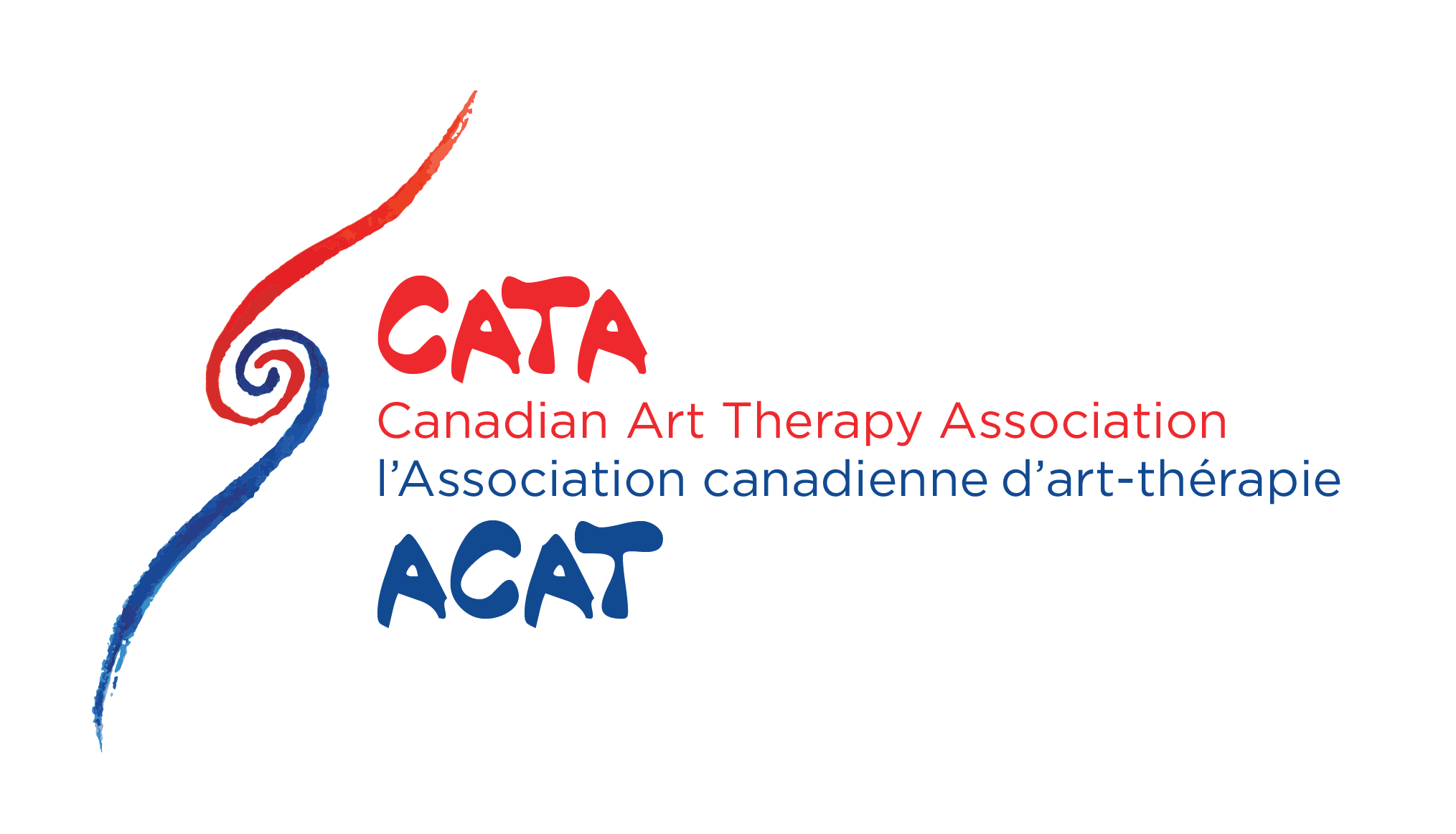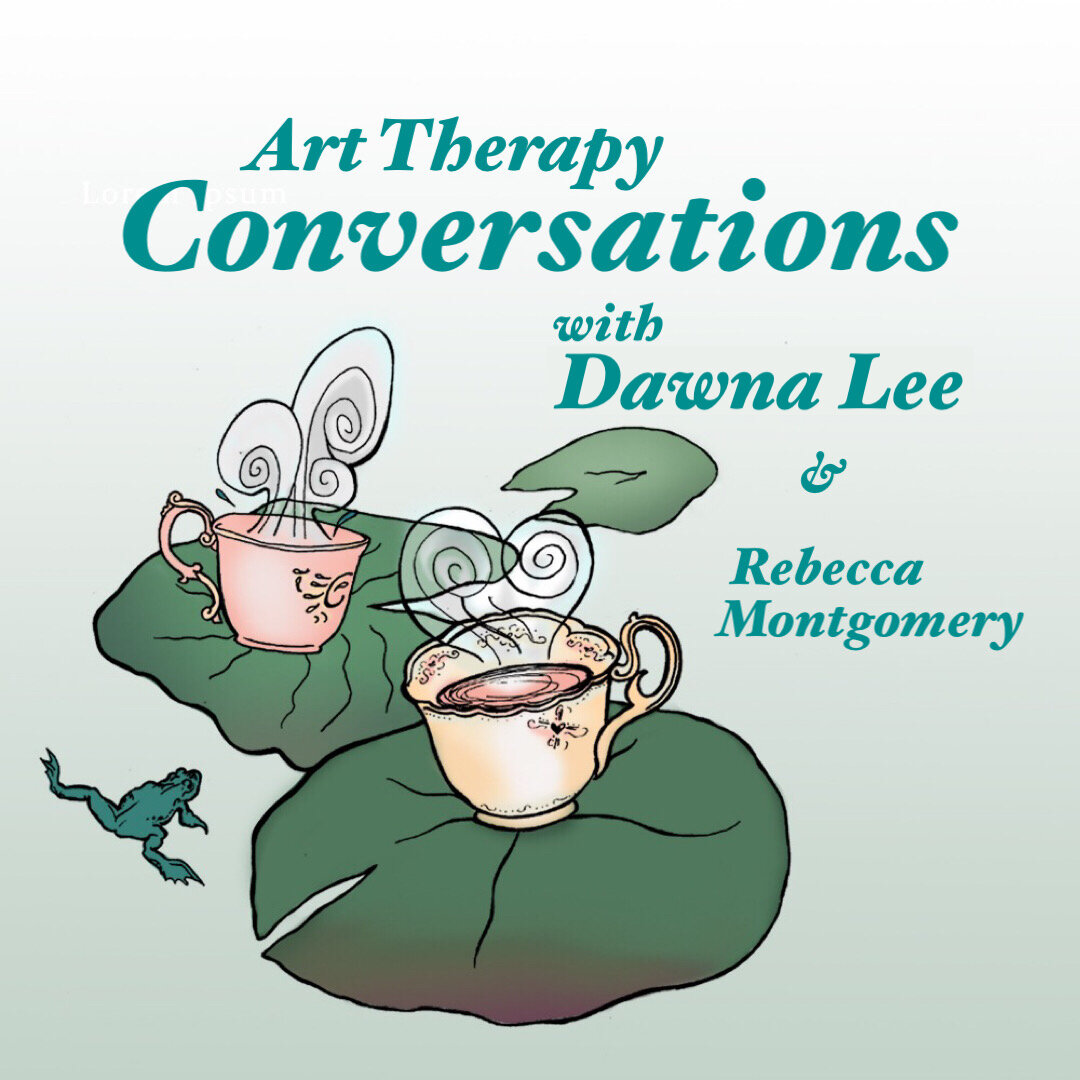Raven’s Nest: Interview with Dawna Lee
Art Therapy Conversations is a regular column in Envisage, developed and written by Rebecca Montgomery. We thank Rebecca for her dedication and creativity in facilitating learning and connections between art therapists across the country!
Dawna Lee (DKATI, ND) lives in Sheshatshiu, Labrador and practices art therapy at Raven’s Nest (Kakatshu Utshishtun) Art Therapy. To learn more about Dawna’s work please visit www.ravensnestarttherapy.com
Rebecca’s narratives in italics below.
Hello from both the coast’s! Thank you, Dawna, for joining me in conversation. It’s almost feeling like springtime here in Vancouver, how is the weather treating you in Sheshatshiu, Labrador?
The weather has been unusually warm this winter, but with much snowfall. We have not met the normal freezing temperatures we are accustomed to having to make safe travels over our lakes and rivers, however, we are enjoying the abundance of snow with outdoor recreation close to home.
You moved to Labrador from Ontario, what caused you to make this big change?
I moved to Labrador 26 years ago. I was born and raised in Toronto (tkaronto) which was a wonderful place to grow and learn from so many diverse cultures. All of my life, I had felt a tug, a calling, to head north and in particular to Labrador. This was a childhood fantasy of mine and I had the opportunity to make that happen when someone I was introduced to relocated to work there. At around that time, Labrador was in the news regarding the Innu protests against the low-level flying that was negatively impacting their homeland (Nitassinan). I have always been drawn to social justice and had been an ally for Indigenous sovereignty when the “Oka Crisis” was afoot in the early 90’s. I fell in love with the beauty of Labrador as well as meeting my future life partner. We made our home in his community where we raised two boys and a grandson.
In one word, how are you feeling at this moment?
Belonging.
When you were working towards your BA (Bachelor of Social Development) you mentioned being inspired by the field of art therapy! What were the aspects of art therapy that you connected with?
“Art and healing have always existed together long before our westernized notions of art therapy.”
My first sojourn as a student was in art school in the early 80’s. I felt a deep spiritual connection to artmaking, but I never saw myself as someone who would sell art for a living. At that time, I didn’t know anything about art therapy. So, art making was my own personal process of self-expression and insight. At a later point in my life, I returned to university to study Social Development Studies. I was very much drawn to the helping field and social justice. At the completion of my degree, I was not completely convinced that I would want to work in the traditional systems of social work as I was very aware of its historical impacts on Indigenous communities. I truly felt that whatever path I was going to take would include art because it’s what has helped me navigate my world and has personally saved me many times. I truly believe one is called to art therapy as a vocation.
For myself (and perhaps a fair few of our readers who are applying for art therapy degrees soon), I’m curious… if you were to talk with your past self, going back to the time you were a student, what would you say?
“The symbols, stories and skills that clients bring to therapy are culturally embedded and tied to their relationship to the land. These are the resources that their ancestors have given them to survive so as an ‘outsider’ or ally it is imperative for me to understand, to the best of my ability, how a client can access their inherent resources.”
There are many years separating my studies at art school from my studies in social work and from art therapy studies. I was fifty years old when I began to study art therapy. I didn’t let age deter me from following my dream. In fact, I found it an advantage. Everything I had learned and experienced in life was brought together and came full circle in my art therapy program. I would tell my eighteen-year-old self in art school that it’s not about the product but the process and that art is healing. I would tell my forty-year-old self in social work school not to despair because you will find like-minded folks or “your people” working in art therapy. I would tell my fifty-year-self in art therapy school that the journey is just beginning.
You shared with me that you married into the Innu community, did working here also contribute to your decision to switch your career to art therapy?
Absolutely! When I shared with my Innu family, friends and colleagues that I was going to study art therapy (rather than social work), I was met with approval. In my experience with the Indigenous community, art has always been understood as a way to express oneself and make concrete one’s dreams, thoughts and feelings, which can serve to guide the individual. Art and healing have always existed together long before our westernized notions of art therapy.
You have travelled through Labrador and have had the opportunity to visit so many communities. It is a part of Canada I would love to hear more about. Can you share some words or concepts about this?
Labrador is located on the northeastern edge of Canada. It is the ancestral home of the Innu and is known as Nitassinan (our land). The coastal areas of Labrador are also the home of the Inuit and are known as Nunatsiavut (our beautiful land). Collectively, all people in Labrador refer to the place as “the Big Land”. Much of Labrador remains unspoiled by roads and human development. The region is vast with rivers, lakes and flanked by spectacular mountains and fjords. Those of us that live here are in awe of its endless beauty.
Please, tell me about Raven’s nest!
Raven’s Nest (Kakatshu Utshishtun) is the name of my private practice, which is located in Sheshatshiu on the banks of Lake Melville. The name is an Innu place name which is within view of the art studio. My art therapy practice is culturally informed and guided by the Indigenous population I am working alongside. For example, Innu and Inuit are both Indigenous peoples but they have very distinct cultures. However, many of the issues that bring them to therapy are the result of the same source which is intergenerational trauma, colonialism or the ‘soul wound’. The symbols, stories and skills that clients bring to therapy are culturally embedded and tied to their relationship to the land. These are the resources that their ancestors have given them to survive so as an ‘outsider’ or ally it is imperative for me to understand, to the best of my ability, how a client can access their inherent resources.
Much of the focus of my work these days is in the reunification of families who have been separated by the child welfare system. As First Nations communities are moving to self-govern their child welfare system, it means children who were out of region placements are returning to their home communities. Much of the work I am doing is Parent/Child dyad work where I facilitate the child and caregiver to re-attach or strengthen their relationship through their co-creation of artmaking. Lucille Proulx, who is considered the ‘Grand Dame’ of attachment-informed art therapy, inspired me greatly while I was studying. The response that caregivers, children and the community have towards dyad therapy has been very positive. I have brought into the therapy the use of the ueuepetshu (an infant’s hammock) as one example of decolonizing my art therapy practice.
When I first heard about you, Dawna, it was about your participation in Art Hive’s travelling show, “Reconciliation”, with the Healing Hearts Project. I would love to hear about the creation of this work
In 2017, The Healing Hearts project was the Kakatshu Utshishtun Art Hive contribution to the Travelling Art Hives Exhibit, Reconciliation: What does it mean to you? The idea to create hearts was inspired by the First Nation Child & Family Caring Society’s call to action to make a ‘Heart Garden’ in memory of children lost to residential schools and to honour the survivors and their families.
At that time, Labrador had been left out of the national residential school apology despite our history of residential schools existing in this province. The youth in the art hive created paper hearts from egg carton pulp and painted them white. During those weeks in the studio, we had the opportunity to talk about residential school and for many children they had never heard about this piece of their history.
Next, all community members including those working in the community were invited to come to a public space, at the local healing center, where paint and collage materials were available for them to decorate a heart with a message. What happened was remarkable. Some folks stayed for many hours making hearts and talking to one another about their experiences in residential school. In one case, sisters who had never shared their story in thirty years with one another spoke about it while others stayed to witness. The tiny paper hearts that the children had made opened up a dialogue that had never been talked about before. The event was held for three days and many people returned each day.
In the end, the hearts were strung together and hung from children’s snowshoes. It was displayed alongside all the artworks from the Art Hives Travelling Exhibit. After a week-long art exhibition in Sheshatshiu, the travelling show was sent on to the Eastmain Art Hive in Quebec and eventually it found permanent residence at the Montreal Art Museum. The Healing Hearts Project stayed in our community and a photo of the artwork was sent in its place. Today, the art work has become part of a larger piece with the addition of more hearts created from when we recently faced a crisis of grief and loss in 2019 and it is permanently hung at the Healing Center in Sheshatshiu.
Thank you Dawna! I am so glad to have met you (virtually, for the time being) and to know about your work. Your words remind me of the inherent healing nature of art and the importance of social justice. These stories feel to me like an invitation and call to action for allyship with Indigenous communities. I also appreciated your words on the continuous, life long process of learning, I will definitely remember that too. Sheshatshiu sounds like a beautiful place, thanks for giving me a look into it!
Rebecca Montgomery (BFA) currently works as a freelance artist while studying psychology and neuroscience at University of British Columbia. Talking with art therapists across the country, she is reminded more and more of why art is such a powerful modality of healing. Most likely, you will find her drinking tea and drawing blind contours, or walking along the coastline. To learn more about Rebecca’s work please visit www.rebeccamontgomery.com





